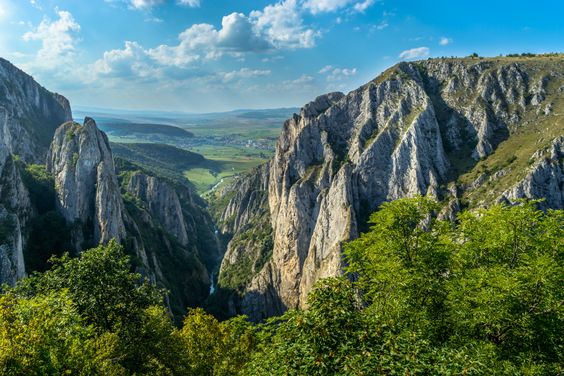The Treasure City of Cluj-Napoca
- 4Steps Voyage

- Jul 8, 2022
- 3 min read
Go to:
Introduction:
Cluj-Napoca, the largest city in the region of Transylvania, traces its origins back to a Dacian settlement (called Napoca) in the 2nd century A.D. After the Roman take-over of Dacia, Napuca became a Roman fort "Napoca" and in 124 A.D., received the rank of "municipium". The city quickly advanced socially and economically and during Marcus Aurelius' reign Napoca received the title "colonia", the highest possible urban status in the Roman Empire.

The name Cluj comes from Castrum Clus, first used in the 12-th century as the name of the citadel surrounding the city. Clus means "closed" in Latin and refers to the hills that surround the city.
German merchants, who arrived here in the 12th century, rebuilt the mediaeval earthen walls of Clus in stone after the Tartar invasion of 1241. Known as Klausenburg to the Germans and Kolosvar to the Hungarians, Cluj became Cluj Napoca in the 1970s, when the old Roman was added to emphasise its Daco-Roman origin.
Highlights:
With one of the most vibrant economies in the country and a population of around 330,000, Cluj, is today a vibrant cultural and education centre. There are six state and many more private universities located in Cluj Napoca - the city with the highest ratio of students to total number of residents, in Romania.

The main square, resplendent with 18th and 19th century buildings and home to many shops and restaurants, is dominated by the 15th century St. Michael's Church, one of the finest examples of gothic architecture in Romania. The square also claims the 18-th century baroque Banffy Palace, housing the weaponry and Romanian art collections of the Art Museum. Visitors who want to learn more about the region should pay a visit to the open-air section of the Ethnographic Museum of Transylvania, a true display of folk architecture. For entertainment, spend an enjoyable evening at the Opera or attend a classical music concert offered by the Cluj Philharmonic.

Cluj - Napoca is one of the seven walled citadels (Siebenbürgen), built in the Middle-Ages, and populated until late 1960s, by Transylvanian Saxons (people of German ethnicity who have settled in Transylvania from the mid-12th century until the mid-19th century).

Some Places to Visit
1. Museum Square:
The Museum Square, located in the centre of the city, is one of the oldest markets in the city. It gets its name after the Transylvania History Museum located within the square. Although it is not a huge area, it is one of the top attractions in Cluj-Napoca because of the density of historical landmarks and buildings. Also, there are plenty of restaurants and cafes, and it is 100% pedestrian. Within the square you will find the Franciscan monastery church building- one of the oldest buildings of the city.
2. Hoia Baciu Forest
For the fans of the supernatural, or for those who are just curious, Hoia Baciu Forest is called The Creepiest Forest in Europe by independent.co.uk. Hoia Baciu Forest became famous after, legend has it, a Shepard went missing with his 200 sheep, never to return. Later on, in 1968, the forest gained international attention after a military technician stated he saw a UFO above a part of the forest. The zig-zag shaped trees that no scientist was able to explain, the strange noises, feeling of nausea, fatigue, and failure of electronic devices is what makes Hoia Baciu Forest a top tourist attraction in Cluj. If you decide to check it out, you should know that there are tours around the forest, and you can even camp overnight. Are you in?
3. Altfel Tower Market
If you’re visiting Cluj during the warmer months, head to Potaissa Street for all of your floral indulgences. One of the most picturesque streets in the entire city, Strada Potaissa is the home to the Altfel Flower Market, which takes place Friday through Sundays from 10-23. You can catch workshops and performances in addition to bouquets of flowers and potted plants for the home or herbs for the garden.
4. Turda Gorges
Near the Turda Salt Mine, there are the Turda Gorges, a perfect place for those who like hiking and camping. The site is a natural reserve with more than 1,000 species of plants and 67 species of animals, some of them being protected. Before entering the gorges, you will find a map and marked paths that you can follow. Take your backpack and start trekking.
References:
www.romaniatourism.com
www.travelmakertours.com
www.farawayworlds.com
www.theculuretrip.com
Pictures:
www.unsplash.com
www.pinterest.com
www.en.wikipedia.org
www.holeinthedonut.com
www.travelmakertours.com
www.farawayworlds.com












Comments